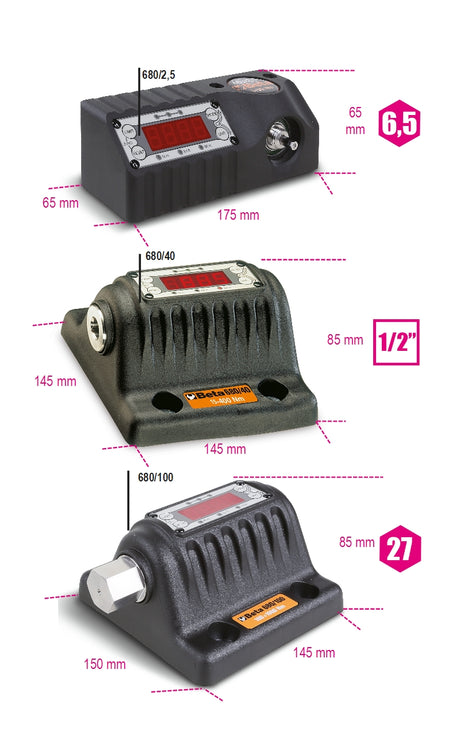Torque meters
(3 products)
Torque Testing Equipment
A torque meter is a device used to measure the amount of torque or rotational force being applied to a shaft or rotating system. Meters need to be regularly calibrated to ensure accurate and reliable torque measurements.
Things to Know About Torque Meters
- Torque meters measure the twisting or rotational force applied to a shaft, typically in units of Newton-meters (N-m) or pound-feet (lb-ft).
- They operate by measuring the angular deflection or twist in a calibrated section of the shaft when torque is applied. This deflection is proportional to the torque.
- Torque meters can be classified into different types based on their operating principle:
- Dial or analog torque meters use mechanical deflection and a calibrated spring to indicate torque on a dial.
- Digital torque meters employ strain gauges or other electronic sensors to convert torque into an electrical signal displayed digitally.
- Reaction torque meters measure the reaction torque required to prevent rotation of a stationary component.
- Torque meters are essential tools for precisely measuring and controlling torque in applications where proper tightening or torque levels are critical, such as:
- Assembly and manufacturing processes
- Maintenance and repair operations
- Quality control and testing
- Research and development
- By providing accurate torque measurements, torque meters help prevent under-tightening or over-tightening, which can lead to equipment failures, safety hazards, or product defects.
A torque meter is an indispensable instrument for measuring and verifying the precise torque applied to rotating shafts or systems, enabling proper torque control and ensuring the integrity and safety of mechanical assemblies across various industries.
The key difference between dial torque meters and other types of torque meters lies in their display and operating mechanism:
Dial Torque Meters
- Use an analog dial display with a pointer to visually indicate the applied torque value
- Operate on a mechanical principle, typically using a calibrated spring or elastic element that deflects proportionally to the applied torque
- Provide a direct visual reading of the torque on the dial scale, without requiring additional electronics or digital displays
Digital Torque Meters
- Utilise an electronic sensor and display the torque value digitally, often on an LCD or LED screen
- Operate based on strain gauges or other electronic transducers that convert the applied torque into an electrical signal
- Offer high precision and resolution, but require batteries or power source


